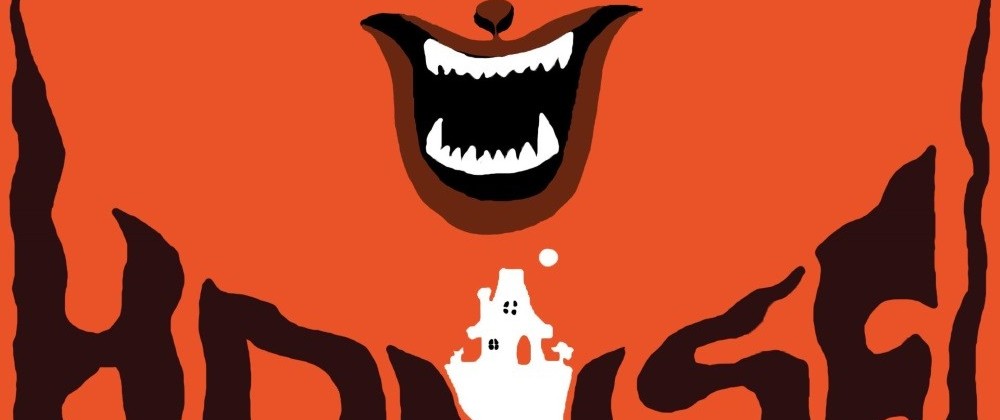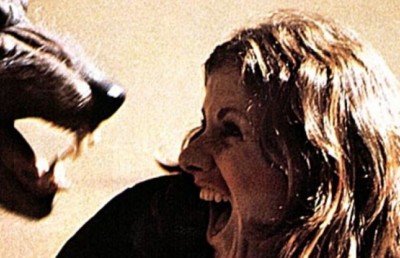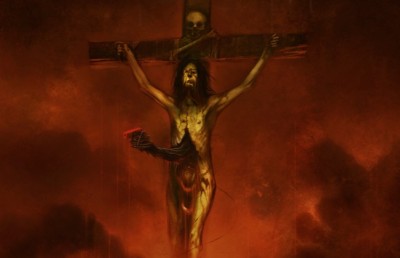Fantasia 2018: Nobuhiko Obayashi and the Perpetual Promise of Youth

This year’s 2018 Fantasia Film Festival was the occasion for a lot of new discoveries from fresh voices from all over the spectrum of genre cinema (do see Microhabitat if you have the chance), but it was also the chance to reconnect with past favourites, respected masters and revered legends. New films from the likes of Takashi Miike and Garyaku Ishii varied in quality, but perhaps the most exciting and paradoxically young and vital film, Hanagatami, came from Nobuhiko Obayashi, 81-year-old living legend of Japanese cinema. Because make no mistake, Obayashi is a pillar of modern Japanese cinema moving deftly between genres and implanting his universe in the minds of children and teenagers with generation touchstones like The Girl Who Leapt Through Time (1983) and I Are You, You Am Me (1982). It might be helpful to think of him as a mix of Steven Spielberg and John Hughes in term of cultural impact. He’s worked in most every genre from straight dramas (like a string of films in the aughts that dealt with the looming specter of death, Before That Day (2008) an highlight among those), to children films like Samurai Kids (1993), to making-ofs (Making of) and manga adaptations, even co-directing an animated feature with Kenya Boy in 1984 and putting his name to an adaptation of the real-life story immortalized in Nagisa Oshima’s In the Realm of the Senses with Sada in 1998.
He is massively beloved in his home country (four of his films appear in Kinema Junpo’s top 200 Japanese films as voted by readers, there is a statue of him in his hometown of Onomishi), but strangely ignored outside of his archipelago beyond his madcap debut Hausu (call it the Kinoshita syndrome). Hangatami is billed as his farewell film, Obayashi was diagnosed with cancer before the film which motivated him to start work on this, his dream project which he had first started writing more than 40 years ago (he has thankfully recovered since then and is working on a new film). It tells the story of a group of young friends at the start of Japan’s militarism in the thirties and the amorous pas de trois set in motion by the return of Toshihiko from his studies in Amsterdam, the sickness of Mina and the militarism of Ukai. The film feels like a magnum opus, a final statement on cherished themes and this strange thing we call life. Thankfully, it has none of the stuffy classicism we might expect from such an exercise, bursting forth on the screen from its first image with such force and never letting go for its almost three hour runtime. The film leaves you entranced and breathless, because each new image seems an opportunity for Obayashi to introduce a new stylistic quirk, a new way to bend the image into a disorienting kaleidoscopic marvel (a feeling some will remember from the aforementioned Hausu), all the better to convey the breathless enthusiasm and yearning for life of its young cast. It’s rare to encounter a film that seems to emerge so completely from its maker’s head, everything from the expressive acting, to the dodgy CGI of a piece with its director’s vision, but it’s the case here and the feeling is intoxicating. So, in front of such an idiosyncratic talent who has garnered such success in another part of the world, it might be interesting to dig more closely into a bizarrely unknown cinematography.
But first, why? Why are Obayashi’s films so rarely discussed beyond the cult status of his first film, Hausu? In a just world, the success of the rerelease of his first work would have heralded retrospectives (there was one in 2015 in New York), DVD releases and a critical re-evaluation, but alas. A reason for Obayashi’s omission from the world film canon might strangely lie in his success in his native Japan, his movies such popular touchstones for entire generations that non-Japanese viewers might have trouble dissociating them from their context, like viewing a blockbuster from another, non-American country. That’s why popular films especially comedies that don’t rely heavily on visual comedy, or are simply silent, are rarely discussed on the world cinema stage. His frequent work in genres like teen and children films that tend to be excluded from “serious” film discussion is no doubt also a factor. Finally, most of his pivotal work took place in the 80s and 90s, decades that are commonly seen as low points in the history of Japanese cinema and therefore ignored, beyond some works from surviving masters of the 60s.
The flipside of this question is: why is Obayashi so popular in Japan. We’ve already established his films have an idiosyncratic style all their own, exploring the plasticity of the image with pop art glee, which would seem to relegate him to the margins of experimental cinema (where he got his start). But his particular brand of experimentation, purely visual and rhythmic, playing around with codes and icons of popular culture and seemingly apolitical especially when compared with contemporaries like Shuji Terayama or Toshio Matsumoto, lent itself perfectly to the growing trend of youth targeted media that captured the Japanese cultural landscape of the 60s and 70s. There is indeed something child-like about Obayashi’s mile a minute style that is prevalent in his early work (his experimental shorts to Hausu and School in the Crosshair (1979)), an inability to settle down on a single visual idea and a stream-of consciousness logic to his plots that seem to emanate from the unbridled mind of a prepubescent critter, sometimes literally with Obayashi’s daughter having contributed to the script of Hausu.
His early experimental work, films like Emotion (1966) and Confession (1968), exemplify this with their nonsensical plots, interested more in jumping from one visual idea to the next than telling a coherent story, and playful engagement with the possibilities of the medium. Emotion mixes in vampires and cowboys in its ramshackle story of a girl coming to the big city, exploiting pop culture’s representation of masculinity to explore a young girl’s burgeoning sexuality.
Obayashi’s many years working in advertising where he helped cement a style of Japanese commercials still prevalent today where random humour and iconic visuals mingle with Hollywood stars and rapid editing (as in the classic Charles Bronson Mendom perfume commercial) were no doubt also helpful in introducing his particular brand of breathless experimentation to a young Japanese audience.
Hausu, however, is the primary emanation, an untethered piece of b-movie magic that exists in its own parallel universe where logic is relegated to the world of boring adults. The film is shot through with a youthful energy that extends to all its aspects from its pop music soundtrack, to its baroque set design, to its ebullient acting which coalesce into an haunted house story where a group of teenage girls are terrorized by the ghost of a woman who lost her love at war. I use the term energy, because in Obayashi’s films there is this almost tangible force of imagination that warps everything, fraying the edges of the frame, obliterating spatial continuity and logical plot progression. In Hausu this energy is tied directly to the characters so that the film can be seen as a formal battle between the group of young girls and this older vengeful spirit. When Sport, the character associated with physical strength gets attacked and fights back, the film switches to a rapid cutting pattern and zooms reminiscent of kung-fu films. More than a simple pop culture reference, this tailoring of film style to a particular character’s personality denotes a desire from the filmmaker to exist in the same present as his teenage characters, to engage with them on a deeper level than simply narrative. Bending the film’s formal strategies to the mindset of the characters, in this case (and in much of his early experimental works) a group of teenage girls, might also explain the caffeinated, bubble-gum meets gothic aesthetic of the entire film.
In its constant visual invention, its never-ending renewal of editing tricks and its galloping story, Hausu devises a sort of continual present, forcing the viewer into submission by the sheer amount of information being thrown every second. One moment might see a piano eating a girl whole, the next a decapitated head float through the frame, all linked by the irrepressible logic of youth. This present, this identification, is therefore not one of haptic visuality, or even of a shared experience with the characters, but one of imagination, the formal contours of the film recreating the feeling of your mind racing. Even in a story filled with death, there is no time to look back, forever a new threat, a new crazy idea to process along with the characters. It’s impressive to see a film (made by a man no less) so inflicted with the rhythms, so willing to embrace the viewpoint of teenaged girls
I Are You, You Am Me
Following Hausu’s success, Obayashi would go on to make a series important youth films in the eighties that would find him settling down somewhat, pushing his experimentation to narratively sanctioned scenes of fantasy as in the body-switch coming-of-age classic I Are You, You Am Me or the time travel classic The Girl Who Leapt Through Time where his usual tricks are used primarily in scenes of transition. Both films are excellent providing strong characterization for their teenage casts to support the more fantastic elements of the plot, but perhaps most potent is their strong sense of nostalgia that separates them most conclusively from the director’s early works. Whereas in Hausu what is scary, what is alien, is the past, represented by the vengeful ghost of a woman from the second World War attacking the youth of today, in his films of the eighties, the fantastic comes to disturb an idealised youth that is moving towards adulthood. In that sense, the fantastical elements which are most attached to Obayashi’s experimental tendencies, the pixelisation, the use of different formats, etc., shift from being evocations of a youthful ur-present as in Hausu where even before the apparition of the ghost the film is in full kinetic mode, the energy emanating from the characters themselves, to representing forces outside of the characters, most often metaphors for growing up.
Much of his eighties work delineates a clear formal and narrative line between reality and the fantastical elements that come to disturb it. In I Are You, You Am Me, this means that scenes of pixelisation that were common in Hausu and Obayashi’s experimental works are relegated to the scenes of body-switching when the main characters, Kazuo and Kazumi, fall down temple steps. The rest of the film proceeds like a more conventional coming of age story with school crushes and teenage hijinks that wouldn’t feel out of place in a John Hughes movie. The following of narrative conventions that demand the characters grow and learn from the experience, a mainstream society approved movement towards adulthood, overcoming their hang-ups to become productive members of society, here feels less like an ironic appropriation of pop culture than a conscious decision to follow its tenets. This underscores a change of perspective from the continual present of Hausu and Obayashi’s experimental works towards a more nostalgic stance highlighted by the film’s opening with 8mm footage and its setting in Obayashi’s hometown of Onomichi. Obayashi had grown up.
If the energy of youth had been overflowing in his early works so as to create a constantly shifting cinematic present, a sort of refusal to see time “embalmed” to invoke Bazin, but instead to invoke an intoxicating present of the imagination born anew with each cut, each camera movement, Obayashi’s eighties output pushes these moments of formal invention to the edges. They are no longer emanations of the character’s youthful perspectives but trials, challenges to normalcy that must be overcome to complete one’s road towards adulthood. Such a narrative stance is not solely the purview of adolescence however. Films like The Discarnates use fantastical elements to mount a layered treatise on grief and the rut of adulthood, by mixing ghosts and zombies with the everyday trials of a salaryman.
This newfound perspective is distinctly adult, as if Obayashi is looking back at his characters instead of filming from their position. Whereas before the fantastic emanated from the characters, a stylized representation of the way they felt and saw the world, an attempt on Obayashi’s part to invoke and transmit to his audience the intoxicating perfume of youth, in films such as I Are You, You Am Me and The Girl Who Leapt Through Time, the scission between fantastic and character, no longer a symbiotic relationship but a more adversarial one, denotes a more adult perspective divorced from the experiential realities of youth. If in Obayashi’s cinema wild experimentation denotes youth, then in those films adolescence is something alien that can be looked back on with fondness, but distinctly in the past, an ordeal which has passed. I Are You, You Am Me even begins with 8mm footage that here gains a more melancholic tone, as if Obayashi is looking back at his childhood, compared to his early experimental works that use 8mm for its zany speeded-up quality. To put it simply, these films are no longer of youth, but about youth, a reminiscence rather than an experience.
This is not to disparage the films, they are both strong coming of age dramas (or seishun eiga, literally youth film, in the parlance of Japanese genre cinema) that treat their character’s ordeals with respect and find the emotional truth behind the more outlandish fantastical elements. I Are You, You Am Me, in particular, presents a vivid portrait of two middle-class families in a small Japanese town with short but memorable turns from the main characters’ parents (fans of Japanese cinema will recognise a younger Kiki Eirin and an older Jo Shishido as the parents of Kazuo), zeroing in on the slow pace of small town life. Its central body switch conceit emerging as a strong metaphor for the lack of control adolescence leaves us in, especially given Kazuo’s family’s move at the end of the film.
The Girl Who Leapt Through Time similarly uses a science-fiction conceit to evoke the drastic changes of adolescence and puberty. After Kazuko is exposed to a strange gas at school, she discovers she can “time-leap”, move back in time at first by accident, but then to undo the changes afflicting her. The film explicitly links her newfound powers to puberty with a teacher mentioning menstruation and a formidable sequence late in film finding Kazuko going back to her childhood memories, a final farewell before a downbeat ending of acceptance and adulthood where impossible love and childish things are put aside for a promising career in pharmaceuticals (a very Japanese ending). Once again the movie soars in presenting a relatable reaction to the fantastical situations and in grounding everything in felt emotions, this time a doomed love story, and a strong evocation of its teenaged milieu.
Bound for the Fields, the Mountains and the Seacoast
This switch of perspective might also account for these films success and longevity in the Japanese pop cultural landscape (2006 saw the remake of both films, one from Obayashi himself in the form of Switching Goodbye Me and one beloved animated adaptation from Mamoru Hosoda). They are steeped in nostalgia especially of the fursusato (hometown) kind which would have no doubt appealed to eighties parents, a generation enjoying the spoils of capitalism after rebuilding the economy through hard work and rural exodus, but also tap into the ambivalence of youth towards growing up, that late summer dread of having to return to school. This furusato impulse becomes even more pronounced in movies like Haruka Nostalgia (1993) or The Deserted City (1984) which are quite literally about adults coming back to their hometown.
These films therefore have their own form of double vision. They are films for teenagers that anticipate their own nostalgia, they look at the present with the wistfulness of the past. Their engagement with outdated filming technologies both a nod to the filmmakers past and a realisation of this paradoxical viewpoint, filming the present with the tools of the past. Such a stance is not shockingly out of the ordinary in the land of mono no aware where teenage years exist in a strange flux between the carelessness of childhood and the regimented responsibilities of adulthood or even in the coming-of-age stories where the natural progression of the story encourages a form of looking back. Of note from this period is the ATG produced Bound for the Fields,the Mountains and the Seacoast (1986), one of Obayashi’s supreme masterpieces and a period piece set in the days leading up to WWII which in many ways anticipates Hanagatami’s thematic depth and returns Obayashi to the more exuberant world of his early films.
Which brings us back to Hanagatami, the film in Obayashi’s filmography that perhaps most successfully melds these two at first sight contradictory strands, the rapid-fire present tense experimentation with the nostalgic bildungsroman tendencies of his youth films. Hanagatami also acts as something of a closing film to an informal trilogy on the long-lasting effects of the war, Casting Blossoms to the Sky (2012) and Seven Weeks (2014) both dealing with secrets from the war coming out into the open and reintroducing more manic and fantastical visual elements into Obayashi’s filmmaking arsenal following a string of more muted dramas about death and aging from the filmmaker in the 2000s (The Last Snow, Song of Goodbye). Both films take place in present days with stories about the war emerging from a stage play in Casting and with the arrival of a stranger at a funeral in Seven Weeks. The past coming back is nothing new in Obayashi’s cinema, it was the lynchpin of House, for example, and can be seen in his other ghost stories like Chizuko’s Younger Sister (1991) or his crime dramas like The Reason (2004), but Hanagatami differs in being a period film, taking place in the 30s before Japan enters into the war in earnest and concerning a group of wide-eyed youths navigating life and love as the threat of death and destruction looms ever closer.
Hanagatami
Hanagatami is a triumph for its ability to embody the disparate qualities of Obayashi’s cinema in its every moment. Each shot seems labored over, manipulated by the hands of its octogenarian creator to explode in the moment, before taking a bow. We are stylistically reuniting with the Obayashi of Hausu with each shot a crafted visual feast of green-screen, impossible colours (or black and white depending on his fancy), improbable zooms, screens within screens, superimpositions and all the craziness one could hope for. They are then edited together at a breakneck pace, one idea snuffing out the other, leaving the viewer gasping for air. Obayashi’s experiments with spatiality – almost all shots have an element of green-screen imagery, leaving the characters in a strange demimonde of fantasy and desire, unmoored from any sense of indexical reality – also have the effect of forcing the viewers to recalibrate their understanding of the space and movements they are seeing at every new cut. The effect is a sort of supercharged hyper-present, similar to the formal strategies of Hausu, that is at once intoxicating and tiring, one is almost forced to choose between marvelling at this untenable ballet or shutting down.
That is even before we take into consideration what happens within these shots, filled as they are with wild movements, impassioned speeches about love and youth delivered in wild-eyed excitement by actors who don’t seem to have any inkling of the concept of irony (how refreshing!). It all makes for an heady cocktail, a perpetual dance of ideas and visuals where you wonder if the performers will ever tire. It’s therefore even more impressive that Obayashi is able to mount a convincing treatise on the ineffable beauty of youth and its inevitable end. The film begins with an Haiku from Kazuo Dan (the author of the book on which Hanagatami is based) on flowers in bloom and their passing, a distinctly Japanese theme, that whilst evoking serene reflection also perfectly captures the deeper concerns of the film. The characters are all at this moment of paroxysm that youth and hormone conjures, they are idealistic, in love and ready to live. Obayashi captures them at their peak of beauty, but like flowers in bloom, their end is inscribed in their perfect beauty. Obayashi, ever the jokester, isn’t afraid to cast actors of wildly different ages with the main character played by 38-year-old actor Shunsuke Kubozuka, embodying the strange doomed youth of the teenaged ensemble. There is the looming threat of war that echoes in the distance, seen in military uniforms and in the warrior values of Ukai, itself a form of peak, an ideal of beauty impractical in our imperfect world. The character of Mina is a potent distillation of this idea, taken as she is with tuberculosis, death only making her more beautiful, too beautiful to last. As viewers, the effect is a potent one, a strange mixture of excitement and melancholy that is felt in both the themes and the formal qualities of film, a continual renewal of beauty and its snuffing out, each cut a new birth and a new death, each shot like those flowers in bloom, exploding for one moment of perfect beauty, before fading out.
In this hyper-present that anticipates its own death, Obayashi complicates his previous perspective as a storyteller, by being both of the moment and transcending its temporality. The use of repeated visual motifs like a falling petal transforming into a drop of blood underscores this dual temporality existing both in the perpetual present of the mind that Obayashi contrives as visual metaphor, and recurring throughout the film as both foreshadowing and realisation of its own prophecy, an image which anticipates its own death. This not simply bittersweet nostalgia for a generation sent to its death, but an invocation of a youth and its ideas (each character can be said to represent a line of thought with the main character, Toshihiko representing the Western-infused romanticism of the Taisho period and Ukai the more samurai values of discipline and patriotism) that mourns itself as it lives. Obayashi instinctively understands this sense of a youth betrayed, being of the generation too young to fight but old enough to grow up with militaristic propaganda, and fills his images with youthful longing for a past and a future that might never be, an ideal that can only last an instant.
That Obayashi is able to infuse a movie of such boundless energy, of such moving contradictions, with such tender notes of complex, bittersweet emotions is a testament to his immense skills as a filmmaker. The last part of the film kicks everything into high-gear for a series of climaxes that finds the characters loving, fighting and living on a full moon night. In those finale moments which gleam with the promise of youth, but are shaded with the gaze of adulthood, a sentiment which exceeds simple nostalgia to bring us to the state Obayashi has perhaps found himself in after a career spent listening to children whilst looking at a world moving deeper into the night, maybe we can see the true Obayashi, one who has successfully melded the present tense of Hausu with the perspective of his eighties output and be thankful he was able to make a film of such resplendent beauty and potent feeling.




_400_258_90_s_c1.jpg)








